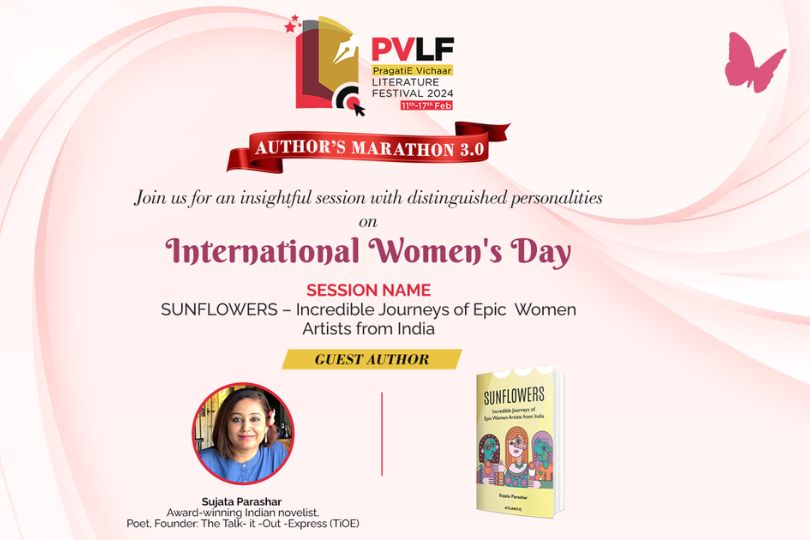Interview with Jai Shukla, Author of “Kaikeyi: The Warrior Queen of Koshala”
interview jai-shukla kaikeyion Sep 16, 2024

Jai Shukla was born in intense hardship symptomatic of small villages in post- independence India. At the age of 17, he joined the Indian Air Force and spent over a decade working as a technician on India’s foremost technology including first generation computers and indigenous fighter jets.
He served across the country, from the deserts of Rajasthan to the forests of North East. After voluntarily leaving the Air Force, Jai built a career in banking and international finance in India and the UK. Post retirement, Jai joined a political party and supports several parliamentarians as a speech writer.
Jai has a degree in world history and is the undisputed champion of historical trivia at any gathering. Post retirement, Jai and his wife shuttle between their hometown Kanpur and Mumbai to spend time with their two children.
Frontlist: Kaikeyi is often depicted as a villain in traditional retellings of the Ramayana. How did you approach reimagining her character in a more nuanced and sympathetic light?
Jai: As an author, I rather seek to challenge and reimagine traditional narratives. My compassion lies in exploring characters who have been depicted dark or grey, especially female characters, who I believe have been mishandled by male-dominated literature with significant bias and prejudice. Kaikeyi is one such character. Others include figures like Manthara, Tataka, Surpanakha and many more.
Kaikeyi was not just a queen; she was a formidable warrior and charioteer. She fought alongside Indra, the king of gods, in the Devasur battle and emerged victorious. She saved her husband Dasharath’s life on the battlefield. Most importantly, Kaikeyi was instrumental in transforming Ram from the prince of Ayodhya to a god. Had Ram remained in Ayodhya, he might have become a great emperor, perhaps even surpassing his ancestors like Ikshavaku, Bhagirath, Mandhata—but he would not have become the divine figure we revere today.
It's crucial to remember that Ram incarnated to establish dharma and eradicate adharma. Those who aided him in his mission—such as Hanuman, Jambawant, Vibhishna, Sage Vishwamitra, and Agastya—are venerated by the world. Yet, Kaikeyi, who played a pivotal role in setting Ram on the path to fulfil this divine purpose, is cursed and demonised. My portrayal of Kaikeyi is an attempt to re-examine her actions and motivations, presenting her as a complex, multi-dimensional character who deserves understanding and empathy.
Frontlist: Given the rich cultural and religious significance of the Ramayana, how did you approach writing this story with cultural sensitivity and respect?
Jai: I am acutely aware of the cultural sensitivities surrounding the Ramayana and its characters. It's clear that people react strongly when a character traditionally viewed positively is portrayed negatively, especially when it involves gods and goddesses. However, the response tends to be more lenient when the reverse is done, where a negative character is given a more positive form. For instance, there are numerous books that re-examine the grey areas of Mahabharat characters like Duryodhana and Karna, justifying their rather unpardonable actions.
In my own experience, I encountered resistance not because I cast Kaikeyi and Manthara in a more positive light, but because I mentioned that King Dashrath had more than six hundred wives and concubines (Source: Valmiki Ramayana). A literary reviewer refused to publish her review in a well-known fortnightly magazine, accusing me of assassinating the character of Lord Ram’s father.
Frontlist: You posit that the Rajguru, rather than Kaikeyi, is the primary architect of the exile. How did you arrive at this interpretation, and what evidence did you base this character on?
Jai: Yes, that is correct. It was the sages rather than Kaikeyi, who were the true architects of Ram’s mission to the southern peninsula. Evidence for this is scattered throughout the epic, beginning with Vishwamitra taking Ram and Lakshman to Sidhashram for celestial weapon training. As part of their strategy, Vashistha sent Bharat and Shatrughna directly to Kaikeya from Videha after the four brothers’ marriages, ensuring that the plan for Ram’s exile was executed flawlessly.
Interestingly, Guru Vashistha distanced himself from the royal palace during the preparations for Ram’s coronation and became actively involved only after Ram had left for the forest and King Dashrath had passed away. Despite having the opportunity at Chitrakoot, Vashistha never advised Ram to return to Ayodhya. Even before Sita’s abduction, Sage Agastya, brother of Vashistha, provided Ram with divine weapons to battle the rakshasas. At every crucial juncture, a sage—whether it was Bharadwaj, Sutikshna, Shabari, Valmiki, or others—was there to guide Ram on his journey towards Lanka.
Frontlist: What was your research process like? How did you delve into the historical, cultural, and mythological aspects of the Ramayana era?
Jai: Writing Kaikeyi or any other book, whether fiction or non-fiction requires extensive reading and thorough research. Mythology texts, be they Celtic, Roman, Greek or Indian have been composed over millennia, leading to numerous inconsistencies within them. For instance, significant differences exist between the two most popular versions of the Ramayana: Tulasidas’s Ramcharitmanas and Valmiki’s Ramayana. Additionally, there are other versions, such as the Adhyatma Ramayana, Anand Ramayana, and Kashmiri Ramayana.
Furthermore, the Kamba Ramayana in Tamil differs significantly from other versions written in various Indian languages. This makes it essential to thoroughly study and analyse all these versions, ‘and something more’, before shaping the characters and events in any narrative.
Now, what do I mean by ‘and something more’? Let me explain. When Tulsidas began writing the Ramcharitmanas, he mentioned, ‘nanapuran nigamagam sammatam yad’, followed by ‘qachidanytoapi.’ This translates to ‘in accordance with the various Puranas, Vedas, and Tantras’ and ‘something more as well.’ Any author venturing into mythological storytelling must embrace this ‘qachidanytoapi’, which represents their creative contribution.
In my writing process, I draw a broad framework around the traditional story, working within it while exercising the freedom an author has—adding and deleting at will—but never crossing the boundaries of this framework.
Frontlist: Are you working on any other projects? Can you share any details about your future writing plans?
Jai: I am presently engaged in several projects. My upcoming book, Stree – The Women from the Ramayana, is set for release on Vijay Dashami. As the title suggests, it explores all the female characters in the Ramayana, whether prominent or lesser-known. This book, commissioned by a renowned publishing house, is co-authored by my friend Ms Lalitha Balasubramanian.
I have also completed another book focused on Lord Krishna’s Dwaraka. It begins with Krishna and Balram’s departure from Mathura and concludes with the submergence of Dwaraka in a devastating tsunami. The manuscript is currently with my literary agency, The Book Bakers, and I am awaiting feedback from their executive partner, Shri Suhail Mathur.
Simultaneously, I am working on several children’s books inspired by characters from the Ramayana and Mahabharat. My next major project is a book on Lord Shiva.
Frontlist: What message do you want to portray via your book “Kaikeyi: The Warrior Queen of Koshala”?
Jai: Kaikeyi is arguably the fourth most important character in the Ramayana, following Ram, Sita, and Ravan. Yet very little is known about her. This lack of attention is similar for other female characters in the two most important mythological epics, the Ramayana and the Mahabharat, except for Draupadi.
For instance, Sita only appears in the narrative at the time of her marriage, and the same can be said for Krishna’s eight wives, who are rarely discussed. By writing about Kaikeyi and others, I am, in my own humble way, trying to fill that gap. The female protagonist of my book Dwaraka is Revati, the wife of Balram, Krishna’s elder brother. Our book Stree also falls into this category, focusing on the untold stories of women from the oldest epic, the Ramayana.



.jpg)






.jpg)
.png)
.jpg)
.jpg)
.jpg)
.jpg)
.jpg)
.jpg)










Sorry! No comment found for this post.